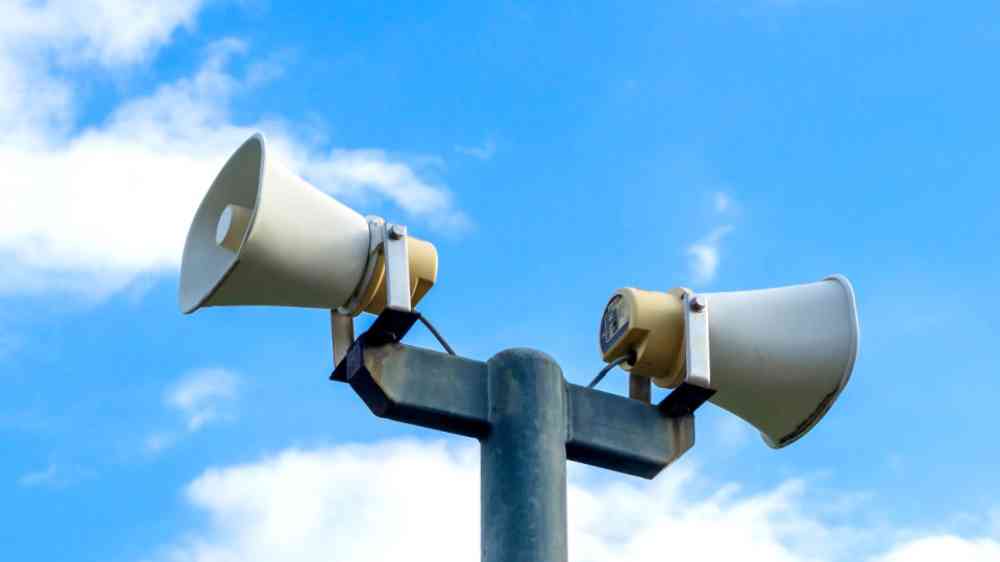Japan's pioneering early warning system offers blueprint for climate adaptation efforts

Natural disasters have increased by a factor of five in the past 50 years, and this trend is increasing. In the last year, natural disasters caused damages of around $270 billion, making increased disasters risks one of the most significant impacts of climate change.
Climate change is increasing the frequency of disasters that wreak havoc on infrastructures, dismantle supply chains, and heap financial and social burdens upon us.
In past two decades, more than 3,000 major disasters occurred affecting 4.2 billion people and incurring $2.97 trillion economic losses. Since 1980, the United States sustained at least 360 climate related disasters which cost around $2.5 trillion in total.
What are early warning systems and what can they do?
While each disaster and its impact may be unique, there is a game-changing solution that can be implemented anywhere in the world: early warning systems.
These systems, which provide critical information and timely alerts to authorities and communities, have been around for years. But now with the need for countries to begin seriously investing in adapting to climate change, their importance is growing.
With just one day's notice, early warning systems can curtail damages by a staggering 30%. The UN and other global initiatives have recognized the importance of a robust early warning system as “low-hanging fruit of adaptation efforts”, which provides tangible adaptation measures and accurate estimates of financing needs.
Unfortunately, the reality is grim: presently, one in three people remain unprotected by any kind of early warning system.
To address this gap, the UN Secretary-General has launched the Early Warning System for All (EWS4All) initiative, which will establish a comprehensive global early warning system by 2027.
But such an ambitious initiative requires substantial technological advancements, strong coordination mechanisms to disseminate and communicate information and people-centric disaster risk management, robust response and preparedness system.
How has Japan harnessed the power of early warning systems?
Until now, the country that has been able to realize the potential of early warning systems the fullest and become a global leader in innovating, developing, and implementing an effective early warning system is Japan.
The country pioneered the three dimensions of successful early warning system implementation: technology, institutions and community engagement at different scales and levels.
Technological advancements for timely detection and hazard forecasting have been revolutionized utilizing supercomputers, weather satellites and radar, and weather forecasting systems (Automated Meteorological Data Acquisition system) that automatically sends hydro-met data from 1,300 stations to the Japan Meteorological Agency. The smartphone application was also created to help citizens to make informed decisions.
In 2015, for the first time in the world, Japan demonstrated that it is possible to predict a typhoon occurrence two weeks in advance. Recently, use of “Fugaku” – the second fastest supercomputer with 3D prediction models has precisely predicted the occurrence of guerrilla rainstorms.
Increased use of internet of things (indigenously developed high quality sensors) and artificial intelligence is revolutionizing the accuracy of localized events for hydro-met services, earthquakes and tsunami events. The Japanese national research institutions, universities and private companies are actively pursuing technological research and development.
Strong coordination mechanisms between the Japan Meteorological Agency, local and regional institutions (such as local and prefectural departments) helps to provide timely, clear and authoritative warnings at local scale. This Emergency Warning System empowers the smooth coordination between authorities and communities by ensuring rapid evacuations and quickly mobilizing resources for dissemination of information to relevant departments.
The notable example is the satellite-based system “J-Alert”, Japan’s nationwide early warning system, which allowed authorities to quickly broadcast warnings to the local media and communities’ centres.
The Japanese approach of developing a people-centric early warning system encouraged local participation by implementing BOSAI (disaster preparedness and response) programmes at local, regional and nation levels to develop resilient communities. The innovative Japan Bosai Platform is a cross-industry platform utilizing public-private-academic partnerships (with over 100 members from diverse industries) to support disaster risk reduction in Japan.
The political recognition of early warning system implementation as a concrete adaptive measure is acknowledged under the enacted Climate Change Adaptation Act in 2018, which is reflected in establishment of 54 local climate change adaptation centres (LCCAC) across Japan and involving the private sector in spearheading groundbreaking advances and implementation.
In comparison to the 1950-60s, such approaches led to a 97% reduction in deaths and a 21% reduction in total economic damages (as a share of GDP) from natural disasters in 2020 in Japan. The country is extending its support to developing countries.
However, the universal applicability of these technologies and practices remains uncertain due to variability in regional contexts such as location, socio-economic conditions, and institutional capacities. Yet, other countries can achieve the similar level of results if they follow the key principles from Japan’s experiences.
Six key principles have been central to Japan's success
- Political recognition of early warning systems as a tangible adaptive measure.
- Fostering advanced technological developments through partnerships with the private sector, research centres, and universities.
- Establishing timely, clear, and authoritative warning systems.
- Early stakeholder engagement and strong coordination mechanisms are in place.
- Providing support to develop local capacity and implementing frequent community training programmes.
- Finally, emphasizing the importance of developing strategies for systematic and timely evaluation of early warning system effectiveness.
Japan’s pioneering early warning system implementation model showcases the tangible benefits of adaptation efforts, with resolute political commitment, technological advancement and active community engagement.
Japan’s holistic approach to early warning systems stands as shining example of best practices for EWS4All Initiative that not only saves lives but also offers hope for a resilient future.